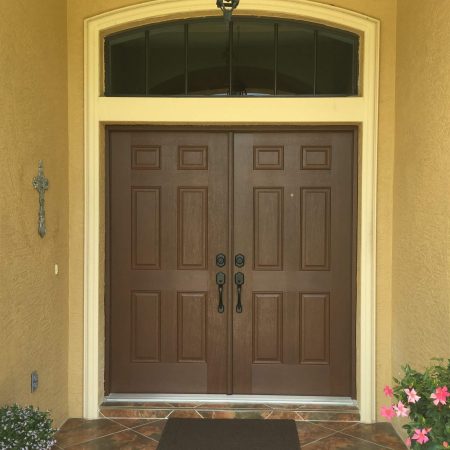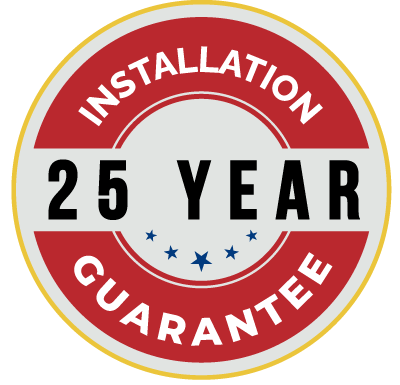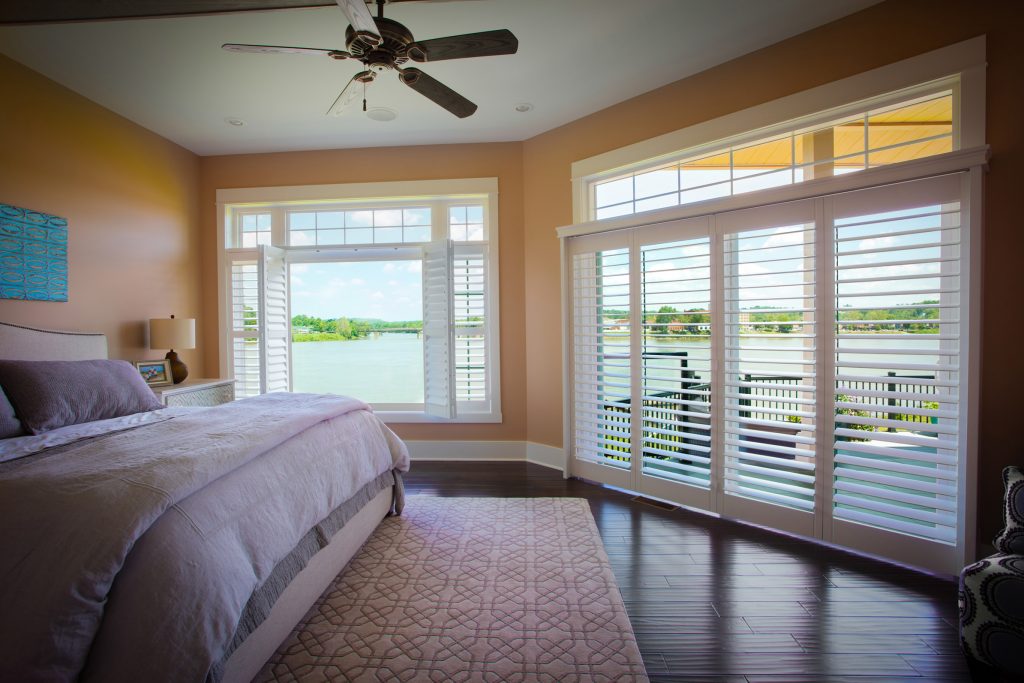- SERVICE AREAS:
- BRADENTON
- SARASOTA
- OSPREY
- VENICE
- NORTH PORT
- PORT CHARLOTTE
- PUNTA GORDA
- CAPE CORAL
- FORT MYERS
- BONITA SPRINGS
- NAPLES
- NOKOMIS
- PLACIDA
- SIESTA KEY
Your searching for the perfect door for your home, but you don’t quite know what material to choose.
You probably also don’t have much time to research the contents of all the different materials,
which is exactly why we have created this simple, short, and easy-to-read list where we rank all the glass types and front door materials on their most important features.
After just a minute, you will be able to make a decision on your new doors.
PS: We have included a front door simple chart ranking all the front door materials from worst to best, so you can see it with ease.
PPS: Same thing for the right type of glass chart
Ranking: 1st
Remember that your personal style and looks are always subjective.
Here, we are basing them on how much customization they have.
Wooden doors are the most customizable material out there.
Hence why they are number 1.
Meaning: if you would like wavy engravings with a black color, there will be a door that fits that description.
And if there is not, you can make your own.
There are plenty of businesses that specialize in that.

Ranking: 2nd
While not as classically beautiful as wood, composite doors offer a modern aesthetic that competes closely with fiberglass for attractiveness.
And offer a whole lot of design options with engravings.
Well deserved 2nd place.
Ranking: 3rd
Fiberglass doors can mimic the appearance of a wood door, with grain patterns and even staining options.
While they may not offer the same level of customization as wood, they can still provide an attractive and stylish look.
Ranking: 4th
For steel exterior doors, there are a lot of colors to choose from, and design is not a problem.
But just like with aluminum, they don’t have as wide a range of engraving options as wood doors.
While versatile, steel lacks the natural beauty and warmth of wood and does not offer the same level of customization as fiberglass in mimicking other materials.
Ranking: 5th
The thing with aluminum is that it looks very good in modern house designs but lacks every other aspect unless upgraded.
But let’s say you want a house that looks modern and sleek.
You have the option of a variety of finishes, including anodized, painted, and metallic, which is not bad!
Aluminum is a good choice when it comes to curb appeal.
And yes, the looks may even be worth the downsides for you.
But except for that, it’s not comparable to wood.
Ranking: 1st (30 to 70 years)
Steel doors are the most durable and known for their strength and ability to withstand severe weather conditions without warping or cracking.
They are resistant to shrinking, swelling, and rotting.
However, they can be susceptible to rust if the paint is damaged or if they are not properly maintained.
Especially in coastal areas like Florida.
Which is why they are most often bought in combination with Impact-resistant Windows.
Ranking: 2nd (20 to 40 years)
Fiberglass has a reputation for being incredibly durable and long-lasting.
They are resistant to dents, scratches, warping, and rotting, making them an excellent pick for homeowners who want a low-maintenance option that will stand the test of time.
However, be aware that after years of exposure to the sun, fiberglass can start to fade.
Ranking: 3rd (around 30 years)
A big selling factor is that they do not warp, rot, or fade as quickly, giving you great protection against the weather and providing a long-lasting door solution with no maintenance requirements.
Keeping them and making them last longer does not require too much maintenance.
It’s pretty easy in fact, simple cleaning with windex or homemade cleaners does the job just fine.
Unless you have a crack in the sealants.
If you do, click here: DIY Window Repair Tips
Ranking: 4th (20 to 40 years)
Although we have found that people with aluminum doors have some small dings and dongs after owning them for some time.
Yes, they are robust.
But the main reason you would want to buy them with durability in mind is if you live in coastal areas.
Since aluminum does not rust or corrode, it’s a better decision than going with other materials if you know that rust will be guaranteed.
Ranking: 1st (Very High Security)
Steel doors are unmatched in terms of security.
They are known for their strength and ability to withstand severe impacts without yielding.
This makes them an ideal choice for safety-conscious homeowners.
Pairing these with impact-resistant windows ensures that your home is well-protected against intrusions as well as severe weather conditions.
Particularly in coastal areas where such threats are prevalent.
Ranking: 2nd (High Security)
Fiberglass does not chip or break easily.
And while it is less strong than steel, it can outlast it.
Ranking: 3rd (Moderate to High Security)
We ranked it second because of the way the door is designed and built.
Glass Reinforced Plastic (GRP) for weather resistance.
Polyvinyl Chloride (PVC) for structure.
Foam for insulation.
Wood for support.
All those combined makes them a great all-rounder for every factor we are ranking it on.
Plus, they typically come with advanced locking mechanisms, making them nearly as secure as any other steel entry door.
Ranking: 4th (Moderate Security)
They are generally stronger than wood and vinyl doors but do not provide the same level of protection as steel or fiberglass doors.
The material is sturdy enough to resist casual attempts at forced entry.
But it may not withstand aggressive attacks as effectively as more robust materials.
Ranking: 5th (Low to Moderate Security)
Ever seen someone axe down a tree?
The same thing applies here.
While we would rank vinyl as worse than wood (since it’s plastic), no one actually uses vinyl for front doors.
But like we mentioned before, the locking mechanism is the most important factor.
Most of the time, a front door made of heavy and durable wood will do the job just fine.
Ranking: 1st
Due to their dense core and tight construction, fiberglass doors are excellent at reducing noise.
They typically outperform wood, steel, and other materials in noise insulation tests.
Making them ideal for homes in noisy areas or for homeowners seeking a quiet indoor environment.
Ranking: 2nd
When it comes to noise reduction, the primary benefit of composite doors is the combination of materials.
Especially the insulation core, made out of foam.
This configuration ranks it superior to even steel in creating a more silent indoor environment.
Ranking: 3rd
Steel doors are very good at reducing noise, thanks to their dense construction and the presence of foam insulation.
They are better than wood and vinyl but slightly less effective than fiberglass in soundproofing capabilities.
Ranking: 4th
It’s decent, but don’t be fooled.
Thickness and density are the two factors to be considered here.
We all have those lightweight wooden doors inside our homes, and they let noise in as if there was no door at all.
Ranking: 5th
Aluminum doors generally do not offer the best noise insulation.
Their inherent material properties do not absorb sound well.
Though this can be somewhat mitigated through the use of insulated cores or by adding other sound-dampening materials within the door structure.
If noise is a major factor, aluminum isn’t the best choice.
Ranking: 1st
Their foam core and tight sealing help maintain indoor temperatures and reduce energy bills.
This is a higher selling factor for people, which is why we recommend using a variant of composite, which we will talk about at the end.
Ranking: 2nd
Fiberglass uses the right material option in terms of thermal insulation.
Their core is usually filled with insulating materials such as foam, which greatly reduces heat transfer.
This makes the energy cost go down a notch.
Ranking: 3rd
Steel itself is not the best insulator, which is why they have foam as a core.
This ranks them higher than wood.
Ranking: 4th
Wood does not have the air-trapping capability to resist temperature from conducting, so It’s not the best pick if you want good temperature insulation.
However, wood is good enough for insulation to beat aluminum.
Ranking: 5th
Aluminum naturally conducts heat, which compromises its energy efficiency.
(Which is why you use it when baking.)
In general, it’s not the best choice if you are looking to save on your energy bills.
Overall Best
Not what you might have thought.
As you can see, every material has its own features and benefits.
Composite doors are a hybrid of those benefits.
If you combine the two best materials—composite and fiberglass—and reinforce them to make them as robust as a steel exterior door, you achieve:
The best insulation,
The best noise reduction,
The longest lifetime,
(Almost) the best security,
And the best durability.
We trust Plastpro so much that we offer a 25 year guarantee for doors.
Do you think giving people a 25 year guarantee for a hollow-core wooden door makes sense?
No, not at all.
But with more than 10 years of reputable work, we have seen time and again that this is the type of door we have the most confidence in.
| Aspect | Wood | Composite | Fiberglass | Steel | Aluminum |
|---|---|---|---|---|---|
| Looks | 1st | 2nd | 3rd | 4th | 5th |
| Longevity | 5th | 3rd | 2nd | 1st | 4th |
| Security | 5th | 3rd | 2nd | 1st | 4th |
| Noise Reduction | 4th | 2nd | 1st | 3rd | 5th |
| Temperature Insulation | 4th | 1st | 2nd | 3rd | 5th |
Ranking: 1
Laminated glass incorporates a layer of PVB (polyvinyl butyral) between its layers that keeps the glass intact even upon impact.
This design prevents shards from causing injury.
For areas like Florida, where hurricanes are regularly occurring, hurricane-resistant windows are the best choice for protection.
Ranking: 2
The main benefit of tempered glass is its durability and safety feature.
It breaks into small pieces that are less likely to cause severe injury.
It is about 4-5 times as strong as heat-strengthened glass.
This strength makes it a well-deserved second place in the rankings.
Ranking: 3
When breaking, heat-strengthened glass breaks into larger pieces that can cut you.
It is three times more resistant to thermal stress compared to normal annealed glass.
Additionally, it is often used in architectural buildings because it provides better surface quality than tempered glass.
Ranking: 4
Insulated glass consists of two or more panes of glass separated by a vacuum or gas-filled space to reduce heat transfer.
Unlike tempered or heat-strengthened glass, they are mostly not reinforced, making them susceptible to breaking.
Ranking: 5
Float Glass or annealed glass is basic that you can find in most of the places in your home, its a glass that breaks into sharp, dangerous shards.
Ranking: 1
Uses multiple panes to trap air or gas, significantly enhancing thermal performance.
Ranking: 2
Provides decent insulation through its layered structure.
Ranking: 3
Offers basic insulation capabilities.
Ranking: 4
Slightly better insulation than float glass due to its density but not specifically designed for insulation.
Ranking: 5
Provides minimal insulation.
Ranking: 1
Laminated Glass Blocks 98–99% of UV radiation, making it ideal for protecting interior spaces from sun damage.
Ranking: 2
The argon inside the panes contributes to increasing UV protection, and when coupled with a Low-E coating or film, it almost performs as well as laminated glass.
Ranking: 3
Reduces UV transmission by up to 75% while also lowering heat transmission.
Most economical, widely used where performance or safety is not critical.
Price range: $5 to $7 per square foot.
Less expensive than tempered and laminated glass but offers additional strength over annealed glass.
Price range: Approximately $9 to $17 per square foot.
Its cost goes up due to the assembly and materials used, making it one of the more expensive window options.
$20 and $40 per square foot
More costly than float glass but offers better safety features.
Price range: $12 to $20 per square foot.
Higher initial cost but offers benefits in safety, UV protection, and sound reduction.
Price range: Varies a lot, usually: $50 to $150 Per square foot
| Type of Glass | Safety and Security | Thermal Insulation | UV Protection | Cost-Effectiveness |
|---|---|---|---|---|
| Laminated Glass | 1 | 2 | 1 | 4 |
| Tempered Glass | 2 | 3 | 5 | 5 |
| Heat-Strengthened Glass | 3 | 4 | 4 | 2 |
| Insulated Glass | 4 | 1 | 2 | 3 |
| Float Glass | 5 | 5 | 6 | 1 |
| Low-E Glass | - | - | 3 | - |
Choosing the right materials for your home is crucial since you are likely to stick with them for years to come.
When it comes to upgrading your home, be it with windows or doors, we want to help minimize mistakes by making uninformed decisions in the buying process.
You c´dont want to regret your decision in a couple of weeks or months into the future.
Since we tried to keep it as simple as possible (not metioning STC levels, U & R Values and pressure resistance) we hope that with our bit of shared knowledge, you can feel just an inch more comfortable in the world of windows and doors.
U-Factor measures the rate of heat transfer and tells you how well the window insulates. U-factor values generally range from 0.25 to 1.25 and are measured in Btu/h·ft²·°F. The lower the U-factor, the better the window insulates. A low U-factor is useful during cold days when heating is needed and is also helpful during hot days when it is important to keep the heat out.
NFRC is the National Fenestration Rating Council, a non-profit organization supported by the Department of Energy that helps consumers compare the energy performance of windows and doors. Window manufacturers that participate in the NRFC program are required to label every window with its thermal specifications. The consumer is then assured that those products meet the thermal requirements for energy efficiency set by the NFRC. Being a member of the NRFC is not required for window manufacturers due to the extensive third party inspection and product testing; however, all glass products offered by Home Install Services, inc. are participant(s) of the NFRC program.
SHGC is the fraction of incident solar radiation admitted through a window, both directly transmitted and absorbed and subsequently released inward. SHGC is expressed as a number between 0 and 1. The lower the SHGC, the less solar heat it transmits and the greater its shading ability.
Condensation is caused by excess humidity in the home and appears on the coldest area of a wall. That is why condensation usually appears on windows.. The warmer the air, the more moisture it will retain, therefore when the air comes in contact with the colder glass, the air is cooled and moisture is released on the glass. Interior window condensation is caused by excessive moisture in the house, and it often occurs in the winter when the warm air inside the house condenses on the cold windows. Exterior window condensation is simply dew and occurs when the window is colder than the dew point.
Condensation is not caused by double glazing (although new windows can sometimes make condensation problems worse, by cutting out draughts).
Treatment for condensation is ventilation (to vent moisture-bearing air to the outside) and heating (to raise surfaces above dew point temperature).
“Low–E” literally means low emissivity, which in turn means a surface that emits low levels of radiant heat. All surfaces reflect, absorb, and transmit heat. So, a Low–E coating reduces the amount of that heat transfer. When talking about replacement windows the term Low–E really applies to the glass being used. Low E glass provides year-round energy savings. A thin, transparent metallic coating is applied to the glass and filters solar radiation. During the summer, Low E reduces heat gain and keeps your home cooler. In the winter, Low E keeps your home warmer by reflecting heat back into the home.
The performance and lasting endurance of vinyl windows compares generously to other building materials. Vinyl offers low maintenance, energy efficiency, and lower cost while still creating an aesthetic appeal. Unlike other materials, however, vinyl does not shrink, swell, or bend during harsh weather conditions.
Since vinyl does not pit, peel, or flake over time, simple care and cleaning can keep your windows looking beautiful for years to come. Heavy rains will keep the vinyl fairly clean, but you can also clean them yourself if desired.
Do not use a high pressure spray to clean your vinyl windows. The pressure can damage the caulking and cause your windows to leak. Use a mild detergent and soft cloth or brush instead.
If you choose to use a mildly abrasive cleaner such as Soft Scrub®, be aware that abrasive cleaners can scratch the glass and frame. Do not use liquid grease removers, strong soaps or detergents containing organic solvents, nail polish remover, furniture polish, or cleaners containing chlorine bleach, as these products can affect the surface appearance of the vinyl.
For dirt and stains that are difficult to remove, please see the warranty.
Argon gas offers a higher level of insulation. The Argon gas is located in the middle of the insulated glass unit. For air to insulate, it needs to be as still as possible because moving air carries energy. Because argon gas is denser than air, adding it to the captive air in double-pane windows improves thermal insulation efficiency. Used in conjunction with a special low-E (short for low emissivity) glass coating, argon gas windows bring the temperature of the window closer to room temperature

We, as a family, have not just built a business but a legacy, intertwining our expertise and tradition with your safety and style for over 40 years. At Home Install Services, every window we install and every door we mount is a testament to a rich history of quality, care, and genuine family service. Your journey through our splendid selection is not just a purchase but a step into a world where each product is instilled with decades of knowledge, skill, and a hearty welcome to be part of our story.


Manufacturer Warranty from Wincore
No high-pressure sales tactics. When getting an estimate from Home Install Services, you will receive a comprehensive quote, competitively-priced estimate on our first visit that won’t be marked with a “today only” price gimmick. Home Install Services takes great pride in providing a quality service from start to finish.





